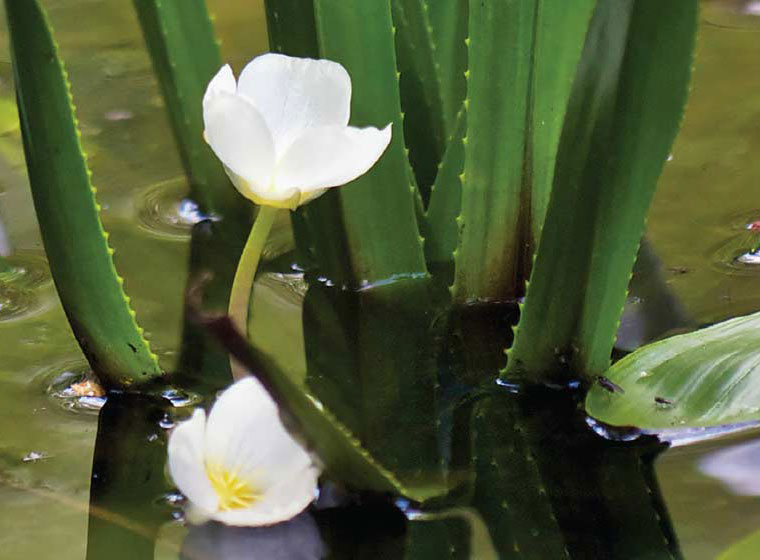Invasive species are spreading
Hundreds of invasive species have infiltrated our lakes, rivers and forests. This puts our native fish, plants and animals and their habitats at risk.
After an invasive species arrives it is almost impossible to remove it. This can cause irreparable damage to important habitats and ecosystems.
How we manage invasive species in Ontario

Ontario Invasive Species Strategic Plan
In 2012, we developed the Ontario Invasive Species Strategic Plan to:
- prevent new invaders from arriving and surviving in the province
- slow, reverse and reduce the spread and harmful impacts of invasive species
The Ontario Invasive Species Strategic Plan: Review of Progress (2012-2022) highlights the milestones and significant achievements of the government and our partners to address the threat of invasive species.

Invasive Species Act
We have regulated invasive species that pose a risk to Ontario’s natural environment under the Invasive Species Act. The act sets out rules to prevent their introduction and control their spread. There are also federal invasive species rules that are enforced in the province.
Learn how we manage invasive species and the Invasive Species Act.
As of January 1, 2024, 10 additional invasive species and 4 groups (genus) of species will be regulated under the Invasive Species Act to help to prevent the introduction and spread within our province. These new invasive species include terrestrial and aquatic plants, fishes, aquatic invertebrates and a mammal.
Ways you can help stop invasive species
Invasive species action plans
On the water, in the garden, at the cottage or on a trail, you can help stop the spread of invasive species.
Read our action plans to find out how.
Follow these steps to help track, control and stop the spread of invasive species in Ontario.
Manage invasive plants on your property
If you find invasive plants on your property, there are ways to manage them so they don’t spread.
Learn about the species to find out which technique will be most effective and practical. You may need to use manual, mechanical, chemical or cultural practices.
If you need to use herbicides, make sure you have the necessary licences and permits or contact the Ministry of Environment, Conservation and Parks for more information.
Read more about how to manage invasive plants:
Stop invasive species – don’t let it loose
Did you know that in Ontario, it is illegal to introduce a plant or animal to a body of water where it is not native? This can start an invasion, but you can help stop it if you:
- never move aquatic plants and animals from one body of water to another
- use artificial lures or bait that is local to the area where you plan to fish
- freeze or salt bait you want to keep for future use
- put unwanted bait in the garbage or on land at least 30 meters from any body of water
- never release or deposit unwanted pets or plants into the natural environment. Try finding them a new home, see if they can be returned to your retailer, or as a last resort ask a veterinarian about how unwanted pets can be humanely euthanized and disposed of
- do not flush plants or dead aquarium pets down the toilet. Instead, seal them in plastic bags and put in the garbage
Garden responsibly
To avoid introducing or spreading invasive species when gardening:
- choose native or non-invasive plants for your garden. Get suggestions in the Ontario Invasive Plant Council’s Grow Me Instead Guide
- avoid relocating plants from your home to your cottage garden and vice versa
- build water gardens away from natural waterways and areas prone to flooding to prevent unwanted escape from your water garden
- don’t compost unwanted invasive garden plants in your backyard or dispose of them in natural areas. Instead, contact your municipality to see if invasive plants should be put in the garbage or yard waste
Learn more in the gardeners action plan.
Stop aquatic invasive species - clean, drain, dry
Prevent the spread of aquatic invasive species by:
- cleaning aquatic plants and mud from your boat, motor and trailer
- draining standing water from your boat’s transom, live wells and motor intakes
- removing invaders you can’t see before travelling to a new body of water by either:
- drying your boat for at least five sunny days
- cleaning your boat with hot water over 50°C or pressurized water over 250 PSI
Learn more in the boaters action plan.
Clean your gear and pets – play, clean, go
Keep your gear and pets clean to prevent spreading invasive species from one body of water or outdoor area to another. You can do this by:
- cleaning bicycles and hiking boots before heading to a new location
- cleaning mud and seeds from ATVs before transporting them
- brushing your pets before heading to a new area
Use local firewood - buy local, burn local
Firewood may carry invasive pests or diseases that could harm our forests. Don’t give them a free ride. Make sure you:
- don’t transport firewood across long distances
- buy and burn local firewood on your next adventure and leave any unused wood on site
Report sightings
If you come across an invasive species, report it:
- by phone: contact the toll free Invading Species Hotline at
Toll-free: 1-800-563-7711 - online: visit EDD Maps, or visit the Invasive Species in Ontario project to report a sighting
- on your mobile: download the EDDMapS Ontario app on your mobile phone (iOS or Android)
Report illegal activity
Call
You can also call Crime Stoppers at
Contacts
To help identify, manage or control invasive species, contact the:
- Invading Species Awareness Program
- Invasive Species Centre
- Ontario Invasive Plant Council
- Federation of Ontario Cottagers' Association
Related information
- Invasive species in Ontario
- Invasive Species Strategic Plan
- Full list of tracked species
- Managing invasive species in Ontario
